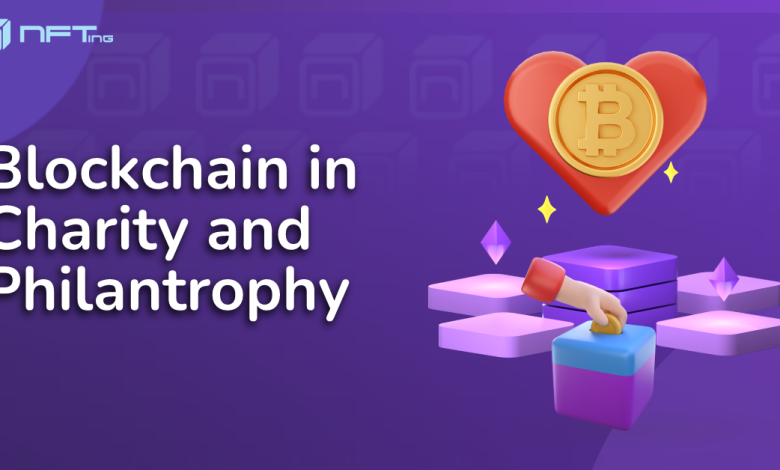Blockchain in Charity and NGOs

What is Blockchain Technology?
Blockchain technology is a decentralized digital ledger system. It records transactions across multiple computers. This technology ensures that records are secure, transparent, and tamper-proof. In recent years, blockchain has gained attention in various sectors, including charity and non-governmental organizations (NGOs).
The Importance of Transparency in Charity
Transparency is crucial in the charity sector. Donors want to know how their contributions are used. They seek assurance that their money goes directly to those in need. Unfortunately, many charities face challenges in demonstrating transparency. Traditional systems can be opaque, leading to distrust among donors.
Blockchain technology can address these concerns. By using blockchain, charities can create a transparent record of transactions. Every donation can be traced, showing how funds are allocated and spent. This level of transparency builds trust with donors.

How Blockchain Works in Charity
Blockchain operates through a network of nodes. Each node maintains a copy of the entire blockchain. When a transaction occurs, it is recorded in a block. Once the block is complete, it is added to the chain in a chronological order. This process is secure and ensures that no single entity can alter the data.
In the context of charity, this means that each donation can be logged onto the blockchain. Donors can track their contributions and see where the funds go. For example, if a donor gives money to build a school, they can see updates on the construction process. This real-time tracking fosters accountability.
Benefits of Blockchain for Charities
- Enhanced Accountability: Blockchain provides an immutable record of transactions. Charities cannot alter or delete past transactions. This feature promotes accountability and discourages fraud.
- Reduced Costs: Traditional charity operations often involve high administrative costs. Blockchain can streamline processes and reduce these expenses. By eliminating intermediaries, charities can allocate more funds directly to their causes.
- Global Reach: Blockchain operates on a global scale. Charities can receive donations from anywhere in the world. This accessibility opens up opportunities for funding from a broader audience.
- Smart Contracts: Smart contracts are self-executing contracts with the terms directly written into code. They can automate processes in charity, such as releasing funds when specific conditions are met. This ensures that donations are used as intended.
Real-World Examples of Blockchain in Charity
Several organizations have begun using blockchain technology to enhance their operations. One notable example is BitPesa, which allows NGOs to accept donations in cryptocurrency. This platform provides a transparent way to track donations and reduce transaction fees.
Another example is the World Food Programme (WFP). They have implemented blockchain technology to distribute aid. By using blockchain, WFP can ensure that food reaches those who need it most. The technology helps track deliveries and verify recipients, reducing fraud and improving efficiency.
Challenges in Implementing Blockchain
While blockchain offers numerous benefits, there are challenges to consider. First, many charities may lack the technical expertise to implement blockchain solutions. Training staff and adapting systems can require significant resources.
Second, there is a lack of standardization in blockchain technology. Different platforms may not be compatible with one another. This fragmentation can complicate integration for charities seeking to adopt blockchain.
Third, regulatory uncertainty poses a challenge. Laws regarding cryptocurrency and blockchain vary by region. Charities must navigate these regulations carefully to ensure compliance.
Building Trust with Donors
Building trust is essential for charities. Donors want assurance that their contributions make a difference. Blockchain technology can help establish this trust. By providing transparency and accountability, charities can create a stronger bond with their supporters.
Moreover, leveraging blockchain can attract a new generation of donors. Younger individuals are often more tech-savvy and value transparency. By adopting innovative technologies, charities can engage these potential supporters more effectively.
Future of Blockchain in Charity and NGOs
The future of blockchain in the charity sector looks promising. As awareness grows, more organizations may adopt this technology. Innovations such as decentralized finance (DeFi) could revolutionize how charities operate. DeFi allows for the creation of new funding models that bypass traditional banking systems.
Furthermore, partnerships between tech companies and charities can drive innovation. By collaborating, these organizations can develop tailored solutions that meet specific needs. This collaborative approach can enhance the effectiveness of charitable efforts.

Conclusion
Blockchain technology has the potential to transform the charity and NGO sectors. Its ability to provide transparency, accountability, and efficiency is invaluable. By implementing blockchain, charities can build trust with donors and enhance their operations.
However, challenges remain in adoption and integration. Organizations must address technical expertise, standardization, and regulatory issues. Despite these hurdles, the benefits of blockchain are significant. As the technology evolves, it could lead to a more trustworthy and efficient charity landscape.




